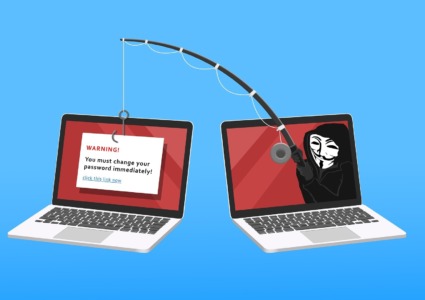Strategies to Protect Yourself From Deepfakes
The rise of deepfakes presents a grave new threat. These AI-generated fabrications swap one person’s likeness for another’s in existing images or videos. While initially harmless, they pose serious risks, from spreading misinformation to enabling blackmail and fraud.
It’s vital to grasp the nature of deepfakes, their creation process, and, most importantly, how to shield yourself from their harm. We will look into strategies to mitigate deepfake risks and highlight the pivotal role of trusted tools and practices in defense against them.
What is a Deepfake?

A deepfake is a type of synthetic media produced by artificial intelligence. The term “deepfake” comes from the combination of “deep learning” and “fake.” Deep learning, a subset of machine learning, uses algorithms and large datasets to train AI models to create realistic images, audio, and video.
These models can generate content often indistinguishable from real-life media, making it a potent tool for creative and malicious purposes.
Deepfakes leverage generative adversarial networks (GANs), where two AI models, the generator and the discriminator, work in tandem. The generator creates fake content, while the discriminator attempts to detect whether the content is real or fake. The generator improves its output over time through this adversarial process, resulting in increasingly convincing deepfakes.
AI Synthetic Media Are Improving

The quality and sophistication of deepfakes are improving at a rapid pace. Early iterations of deepfake technology were relatively easy to spot due to unnatural movements, poor lip-syncing, and noticeable visual artifacts. However, these tell-tale signs are becoming harder to detect as AI technology advances.
Modern deepfakes can seamlessly mimic facial expressions, voice inflections, and even subtle nuances in body language, making them nearly indistinguishable from genuine footage.
This improvement poses a significant threat, mainly when deepfakes are used for malicious purposes. Scenarios include:
- Creating fake news.
- Impersonating individuals in high-stakes political or financial situations.
- Fabricating compromising material for blackmail.
As deepfakes become more sophisticated, staying informed and proactively protecting yourself is essential.
Ways to Protect Yourself From This Digital Impersonation

Stay Informed and Vigilant
The first line of defense against deepfakes is awareness. Stay informed about the latest developments in deep fake technology and the various ways it can be used. Follow reputable news sources and technology blogs to keep up-to-date with new trends and threats.
Awareness of the potential risks and the signs of deepfake media can help you identify suspicious content.
Use Two-factor Authentication and a Strong Password
Implementing two-factor authentication alongside a strong, unique password is essential for bolstering your online security. This dual-layered approach adds an extra level of protection, requiring both something you know (your password) and something you have (such as a mobile device) to access your accounts, significantly reducing the risk of unauthorized access.
Verify Sources

Before believing or sharing any media content, especially controversial or sensational content, verify its source. Check if multiple reputable outlets have reported the media. Be skeptical if the content originates from a single source or an unknown entity.
Use fact-checking websites to validate the authenticity of the information.
Use Deepfake Detection Tools
Several tools and services have been developed to detect deepfakes. These tools analyze media files for inconsistencies that may indicate manipulation. Some popular deepfake detection tools include Deepware Scanner, Sensity AI, and Microsoft Video Authenticator.
Regularly using these tools can help you identify deepfake content and avoid falling victim to it.
Employ Digital Forensics
Digital forensics involves using specialized software to analyze digital media for signs of tampering. Forensic tools can detect anomalies in the metadata, inconsistencies in lighting and shadows, and other subtle clues that may indicate a deepfake. For individuals and organizations that handle sensitive information, employing digital forensic experts can provide an additional layer of security.
Educate Yourself on Media Literacy
Media literacy involves understanding how media is created, distributed, and consumed. By educating yourself on media literacy, you can better understand the techniques used in deepfakes and how to analyze media content critically. Many educational resources and online courses are available to help improve your media literacy skills.
Use Fortect for Protection

Utilizing advanced algorithms, Fortect identifies and replaces any compromised or missing files with their original copies, ensuring that your system remains resilient to the manipulative tactics of malicious actors seeking to exploit deepfake vulnerabilities.
Moreover, Fortect’s robust malware scanning and protection features provide an impenetrable shield against online threats, including those posed by deepfake-related malware. Whether navigating the web or engaging in online communications, Fortect acts as a vigilant guardian, preempting cyberattacks before they can infiltrate your system.
Download and install Fortect today, and take the first step towards a safer and more secure digital future.
Conclusion
Deepfakes represent a significant and growing threat on the internet. As AI technology advances, the line between real and fake media becomes increasingly blurred. However, by staying informed, using detection tools, practicing good digital hygiene, and advocating for stronger regulations, we can protect ourselves from the dangers posed by deepfakes.
Tools like Fortect play a crucial role in this defense, offering robust protection against cyber threats.




